Belted Kingfisher: What You Need To Know
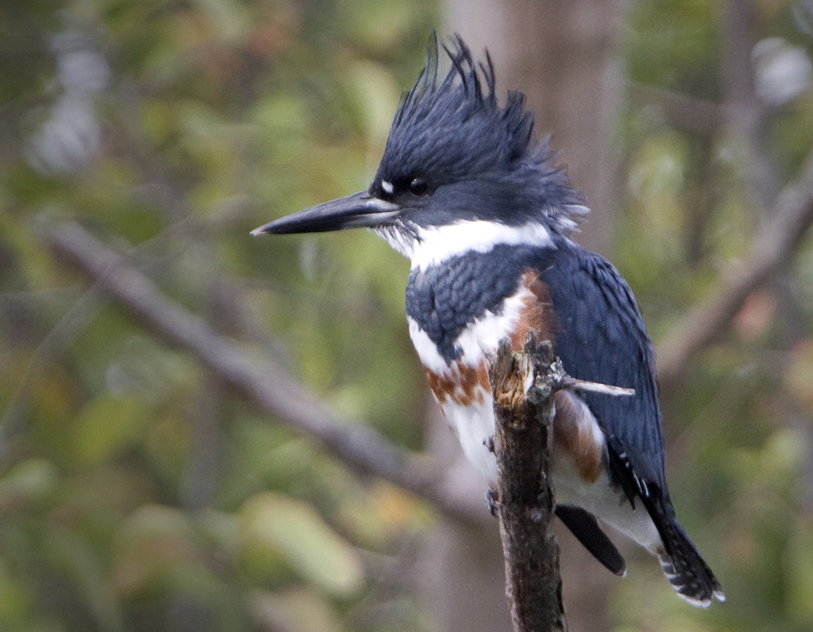
Belted Kingfisher
Photo Credit – I-naturalist (Birds of San Diego County)
I usually hear the Belted Kingfisher rather than see one when walking alongside the Corte Madera Creek near San Francisco. Occasionally, you might observe one perched above the water or hovering on rapidly beating wings. The Belted Kingfisher is a member of about 120 species worldwide, with the most prominent being the Kookaburra, native to Australia and New Guinea. Kingfishers have big heads, dagger bills, and tiny feet. Only the Belted Kingfisher and two other species are resident in the United States. Neither of the other two, the Green Kingfisher and the Ringed Kingfisher, is present in California.
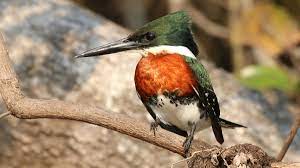 Green Kingfisher
Green Kingfisher
Photo Credit – National Audubon Society
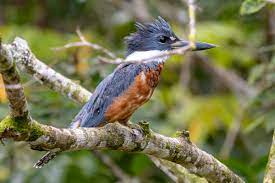 Ringed Kingfisher
Ringed Kingfisher
Photo Credit – National Audubon Society
The global population of the Belted Kingfisher is approximately two million, of which two-thirds inhabit North America. It is abundant and widespread near lakes, streams, and estuaries, and is of Least Concern under the United States classification of Birds of Conservation Concern.

Here is some information on kingfishers in general and Belted Kingfishers in particular:
- Belted Kingfishers appear as fossils in several southwestern states and date back at least 600,000 years. Fossils of other kingfisher species go back two million years.
- Greek mythology explains the derivation of the name kingfisher: A time long ago, a happily married couple named Alcyone (Halcyon in Greek), daughter of Aeolus, God of the winds, and Ceyx, King of Trachis in central Greece, annoyed the God Zeus by comparing their marriage to his with Hera. Legend is that, in a fit of rage, he cast a thunderbolt at Alcyone’s husband’s ship as he was sailing his vessel to Ionia to consult the Oracle over his brother’s death. It sank and Ceyx perished. Hera was so profoundly saddened by the fate of Ceyx that she arranged for Morpheus, God of Apparitions, to create a life-like specter of Ceyx, revealing to Alcyone the circumstances of her husband’s death. Upset by what she saw, she threw herself into the sea and perished.
The Gods of Olympia were so impressed by the couple’s devotion to each other that they had Zeus atone for his deed by transforming the couple into flashing blue Halcyon birds. Halcyon is the Greek word for kingfisher. The story ends with the Gods creating each January for two weeks, a calm and tranquil sea that allows Alcyone to lay her eggs and teach her chicks to fly. Hence, the word “halcyon” has become established in our vocabulary as meaning a happy and peaceful time. Our Greek species of kingfisher is the Eurasian or Common Kingfisher. - A kingfisher is supposed to have been a bird to have flown from Noah’s ark, receiving on its breast the orange of the setting sun and on its back, the blue of the sky.
- My early days spotting kingfishers occurred in the 1950s, along the sides of the Ouse and River Nidd in Yorkshire. Presumably, these were the birds that originated in Greek mythology. They were known to me simply as the Kingfisher, Common Kingfisher, or the River Kingfisher. They were dumpy, short-tailed, about the size of a sparrow, and passed me by in a splash of blue as they moved fast and low over the water. My 1958 Bird List mentions this bird as observed in 1905, fishing among the ice on the Ouse. Most are resident birds except when there are prolonged freezing conditions in winter.
- The Belted Kingfisher belongs to a distinct group of kingfishers known as water kingfishers, sometimes hovering over the water before diving after their prey. The Kookaburra belongs to a sub-family known as tree kingfishers, and the Common or Eurasian kingfisher is a member of a third category known as river kingfishers. All species in the Americas are water kingfishers. Belted ones mainly eat fish in shallow water or swim near the surface. The bird is medium-sized, has a large, squarish head, dagger-shaped bill, shaggy crest, and blue and white plumage. Unlike many other birds the female is more brightly colored than the male and includes a rust-colored belly band.
- The Belted Kingfisher builds its nest in tunnels. It has a flat toe with sharp, pointed claws that assist with the digging. Nests usually are excavated along a body of water, sloping upwards, and can be as long as eight feet. The clutch size is typically five to eight eggs, and both parents share in the incubation and feeding of the young. Sometimes, they host tenants in their tunnels. Swallows occasionally share their burrows, digging out small cavities. The pair will defend their territory against other kingfishers.
- And you are likely to hear Belted Kingfishers because of their three to four-second repeated chattering, a piercing rattle that they make when disturbed.
- They wander widely and have appeared in the Galapagos Islands, Hawaii, the Azores, Iceland, Greenland, and occasionally in Europe, where they are usually “twitched” because of their rarity.
- Some Native Americans believe that the kingfisher signals wealth, prosperity, and love for the one who sees it. The bird also features in native art.
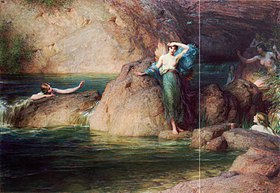 Painting by Herbert James Draper, 1915: “Halcyone”
Painting by Herbert James Draper, 1915: “Halcyone”
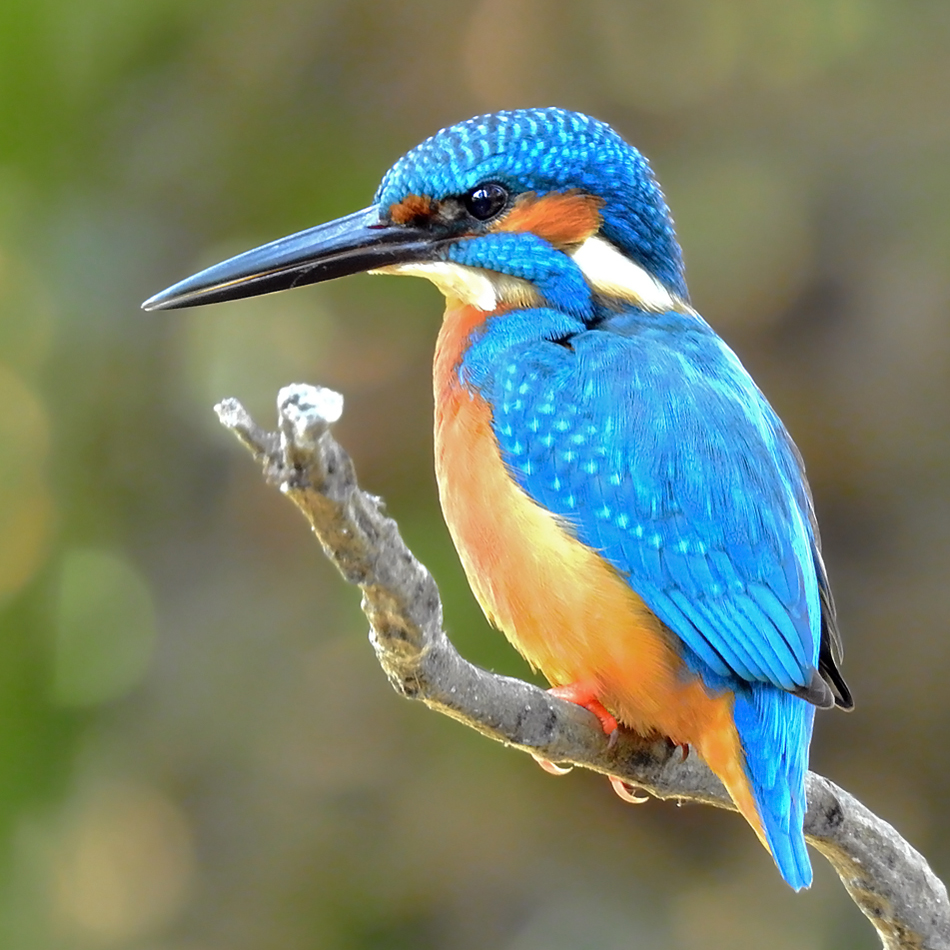 Common/Eurasian Kingfisher
Common/Eurasian Kingfisher
Photo Credit – Wikipedia
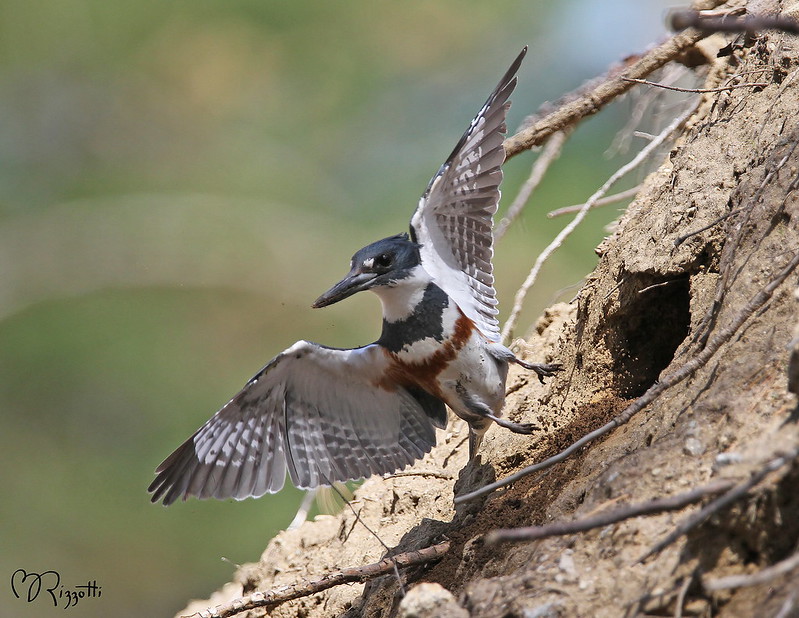 Belted Kingfisher, Nest
Belted Kingfisher, Nest
Photo Credit – BirdNote

Belted Kingfisher Native American Art
Credit-Glen Rabena, Hornby Island, B.C.
It is a bird that I love to hear as much as to see.



